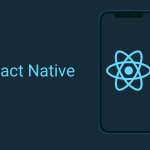Next.js has become the standard framework for building production-ready React applications. It combines the developer ergonomics of React with powerful features like server-side rendering, static site generation, incremental static regeneration, API routes, and edge functions. Whether you are building a marketing site, an e-commerce store, or a complex web app, Next.js helps you ship faster, perform better, and scale with confidence.
Table of Contents
What Is Next.js and Why It Matters
Next.js is a React framework created and maintained by Vercel that adds conventions and features for production apps while keeping React’s flexibility. Core capabilities such as automatic route-based code splitting, prefetching, and optimized image handling make it easier to deliver fast experiences. The official Next.js documentation at Next.js Org is an excellent starting point for learning the framework and understanding recommended patterns.
Key Features You Should Know
Server-Side Rendering (SSR)
Next.js lets you render pages on the server at request time. SSR improves first load performance and search engine visibility for dynamic pages. Use getServerSideProps to fetch data at request time when content must be fresh.
Static Site Generation (SSG)
SSG pre-renders pages at build time, producing static HTML that serves extremely quickly. Use getStaticProps and getStaticPaths for pages that can be generated ahead of time, such as blogs or product listings.
Incremental Static Regeneration (ISR)
ISR gives you the best of both worlds by regenerating static pages after deployment without rebuilding the entire site. Configure a revalidate interval in getStaticProps to update content on a schedule, which is ideal for fast-changing but cacheable data.
App Router and Server Components
Next.js introduced the App Router and React Server Components to let you render parts of the UI on the server while keeping interactivity on the client. Server Components reduce client bundle sizes and simplify data fetching by colocating UI and data logic.
Image and Font Optimization
Next.js includes an <Image> component that optimizes images automatically, serving modern formats and appropriate sizes. Built-in font optimization reduces layout shifts and improves rendering performance.
API Routes and Edge Functions
You can create serverless endpoints inside your Next.js project using API routes, which simplifies backend integration. Edge functions let you run logic close to users for ultra-low latency, ideal for personalization or A/B testing.
When to Use SSR, SSG, ISR, or Client-Side Rendering
Choose SSG for pages that rarely change and need superb performance, such as docs and landing pages. Use SSR for pages that require user-specific or real-time data. ISR fits content that is mostly static but occasionally updated, like product pages. Client-side rendering is still useful for highly interactive dashboards or when using client-only APIs. Mixing patterns is common; Next.js makes it straightforward to use the right tool for each route.
Performance and SEO Benefits
Next.js helps you achieve measurable performance gains and better SEO. Pre-rendering content means faster First Contentful Paint and improved Core Web Vitals. The framework also supports meta tags and structured data out of the box, which are essential for search engine indexing and rich results. Vercel’s platform provides a seamless deployment experience with performance-focused defaults.
Developer Experience and Tooling
Next.js emphasizes DX with fast refresh, TypeScript support, and robust error overlays. The framework integrates with popular tools such as SWR for data fetching and React Query for caching. For styling, you can use CSS Modules, Tailwind CSS, or styled-components depending on your team’s preference. The ecosystem around Next.js is mature, and many companies publish patterns and starters you can adopt.
Best Practices
Prefer static generation where feasible and enable ISR for frequently updated content. Minimize client bundle size by using Server Components and dynamic imports. Use the built-in Image component to optimize media assets. Protect sensitive operations by moving them to server or edge code rather than client code. Monitor performance with Real User Monitoring (RUM) tools and analyze Core Web Vitals regularly.
Deployment and Scaling
Deploying Next.js to platforms like Vercel, AWS, or Cloudflare Pages is straightforward. Vercel’s integration offers zero-configuration builds for many projects and optimizes caching at the CDN level automatically. For large-scale apps, consider splitting responsibilities: static assets on a CDN, edge logic for personalization, and serverless functions or dedicated backends for heavy compute tasks.
Learning Path and Resources
Start with the official Next.js tutorial to build a small app and understand routing and data fetching. Explore Vercel’s platform docs to learn about deployments and serverless patterns. For advanced topics such as Server Components and edge runtimes, follow the React team and Next.js changelog to stay current.
Final Thoughts
Next.js is a pragmatic and powerful framework that streamlines the delivery of modern React applications. Its blend of performance optimizations, flexible rendering strategies, and excellent developer experience make it a top choice for teams of all sizes. Whether you aim to build a blazing-fast marketing site or a complex, data-driven application, Next.js gives you the tools to deliver smooth, secure, and scalable user experiences.
Also Check Riverpod in Flutter – Modern Comprehensive Guide – 2025







1 thought on “Next.js – Ultimate Path to Modern React Apps”